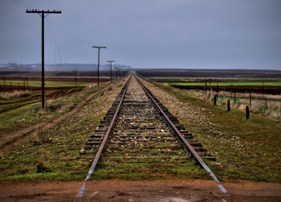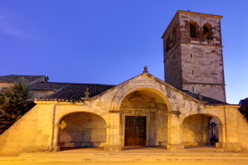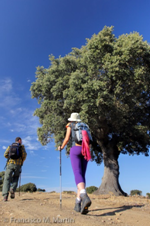
Time for travellers to say goodbye to the provincial capital and to greet the region of La Armuña, the veritable granary farming area of the province. The growth of the city erased the original stretch of the Vía de la Plata, which is why the Jacobean way now shares the same route as the national highway that connects Salmantica with Ocelo Duri, which of course is the present day neighbouring city of Zamora. One must then leave the national highway, along a track which passes by Aldeaseca de la Armuña before reaching the hamlet of neighbouring Villares de la Reina, which despite having only 976 inhabitants, is by far more populated than the vast majority of the villages in the province.
Travellers will now see how the route heads down to the valley, which is snaked by the Encina stream. Before crossing it however, there is the Septa or La Seta ridge, which for centuries was used to patrol this part of the route as it was traversed by one of the major thoroughfares for people and goods in the whole of the Iberian Peninsula.
After crossing the Encina stream along a raised cement walkway, it parts ways with the national highway, and instead runs parallel to it for a number of kilometres. To the left, is the village of Castellanos de Villiquera and, and with no other distraction than enjoying the landscape and the wonderful variety of local flora and fauna, you reach Calzada de Valdunciel along the Santa Elena road.

Even the name of this village is guilty of having some kind of consensual relationship with the Vía Plata. Travellers enter the province of Salamanca via the Calzada de Béjar, and then immediately abandon it for another, the Calzada de Valdunciel. This municipality enjoys close ties to the Mozarabic Jacobean way. Since time immemorial, as can be seen by the Fuente Buena Roman gravestone, but none the less very current. The Calzada Hostal, built especially for pilgrims is a fabulous place to stop and rest, but not without visiting the Caminos Históricos Visitors Centre, opened in 2007, and, as a fond farewell, the exhibition of fragments of ancient milestone markers that can be found on the way out of the village.
